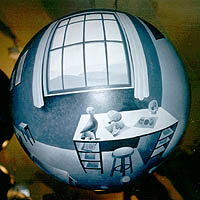
Artist: Dick Termes
| Termespheres are spherical paintings that involve the total visual environments around us, everything you see from one revolving point in space. The spheres hang from ceiling motors, which add a fourth dimension of motion. The spherical panoramic views are conceived from inside the sphere but painted and viewed on the outside surface of the sphere. |  |
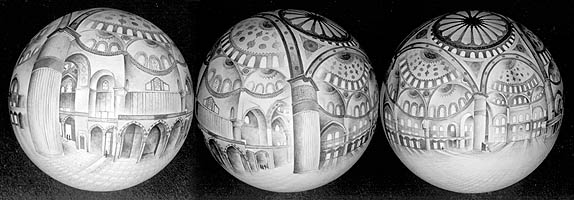 The Blue Mosque, 1999 |
| The larger spheres that are displayed outside are painted on the inside surface of the sphere to help the paint survive snow and rain. If you can imagine yourself inside a transparent sphere and could paint on that inside surface everything you see through the sphere all around you, you would end up with a Termesphere. This painted environment would hold everything above you, below you, behind and in front of you, to your left and to your right. The perspective of the sphere is indeed more than a way to draw and paint pictures. Very exact geometries come out of this perspective. The vanishing points are spaced equal distance like the vertices of the octahedron. Every cubical image on the sphere projected to all six vanishing points. All parallel lines projected to two vanishing points, opposite poles on the sphere. If a line projects to the North point, it also projects to the South point. West pointing lines also project to the East, and Zenith project lines also to the Nadir point. | 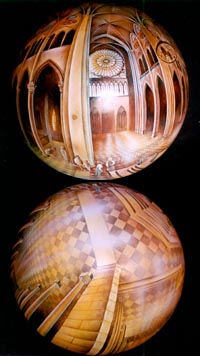 Notre Dame |
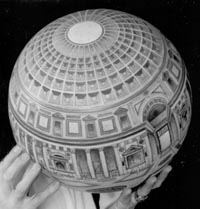 | This is very much like the real world around us. All of these lines, if extended, would come back around to themselves, bisecting the sphere in half. Each line is drawn with a flexible straight edge but only looks straight on the sphere when you see it in the middle of the sphere. |
| Six-point perspective on the sphere has allowed me to create many imaginary worlds as well as such complicated architectural worlds as the inside of the Paris Opera and Sainte Chapelle of Paris, the Loretto Chapel in Santa Fe and the Blue Mosque in Istanbul. Interiors of buildings have proven to be one of the better tests for the six-point prespective because there is no room for error with this type of image. Everything has to fit properly together or it will quickly become apparent. If I were doing landscapes, there would be lots of room for error. | 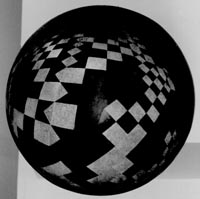 Fission of the Check, 1971 |
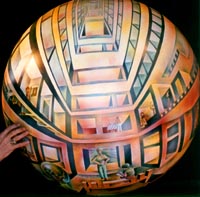 Rounding Off the Edges, 1992 | This dimension also teaches people to think and see in three-dimensional space. It helps people better understand the globular world we live in. Studying the geometries of the sphere, one quickly realizes how different they are from the flat geometries. |
Dick Termes,
1920 Christensen Dr.,
Spearfish,
South Dakota 57783,
U.S.A.
E-mail: mscholz@blackhills.com
| Homage to Escher |
| gallery entrance |
| past exhibitions |
| Leonardo On-Line |